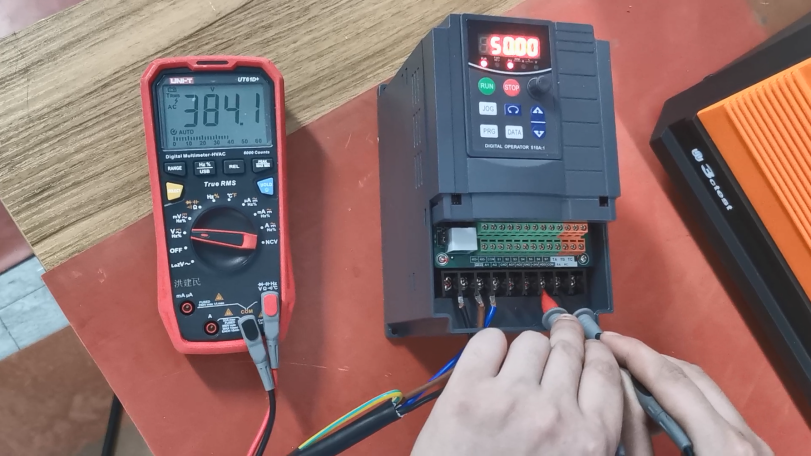What could be the issue if the output voltage of a 380V input frequency inverter is inaccurate?
Recently, a customer contacted us regarding an issue they encountered while testing an EV510A series frequency inverter: although the input voltage was 380V, the measured output voltage was inaccurate. The customer inquired whether this indicated a fault in the inverter. The answer, of course, is no!
Through further discussion, we learned that the customer had used a standard digital multimeter to measure the output voltage of the inverter. During operation, inverters generate significant harmonics at both the input and output terminals. Standard digital multimeters lack anti-interference capabilities, and when used to measure inverter output, this can lead to issues ranging from inaccurate readings and potential damage to the multimeter itself, to more serious consequences such as short circuits or even damage to the inverter’s output module. Additionally, prolonged use of the multimeter may also contribute to measurement inaccuracies.
Frequency inverters are widely used in industrial speed regulation applications. Their main circuit typically adopts an AC-DC-AC voltage inversion method. The inverter takes an external 380V, 50Hz AC power supply, rectifies it into a DC voltage via a three-phase bridge rectifier circuit, filters it through capacitors, and then inverts it into a variable-frequency AC voltage using high-power transistors. This variable-frequency output provides a flexible power source for motors requiring speed control.

Normally, when we refer to the output voltage of an inverter as 380V, or when the voltage value is displayed on the inverter panel, it represents the effective value of the fundamental wave of the output voltage. However, the actual output waveform of an inverter is a PWM wave, which contains not only the fundamental wave but also a significant amount of high-order harmonics. Additionally, inverters can only step down the voltage and cannot increase it.
When we measured the output voltage between terminals UV, UW, and VW of the inverter using a Uni-T digital multimeter, the recorded values were 384.1V, 385.3V, and 379.4V, respectively. These values are considered accurate as the error remains within 3%.

Therefore, if the measured output voltage of a frequency inverter with a 380V input appears inaccurate, it may not necessarily indicate a fault in the inverter itself — the issue could lie with the measuring instrument. To accurately measure the output voltage of a frequency inverter, it is essential to select appropriate instruments and methods that meet the requirements for obtaining reliable results. In this case, a Uni-T digital multimeter was used for the measurement, provided here for your reference.